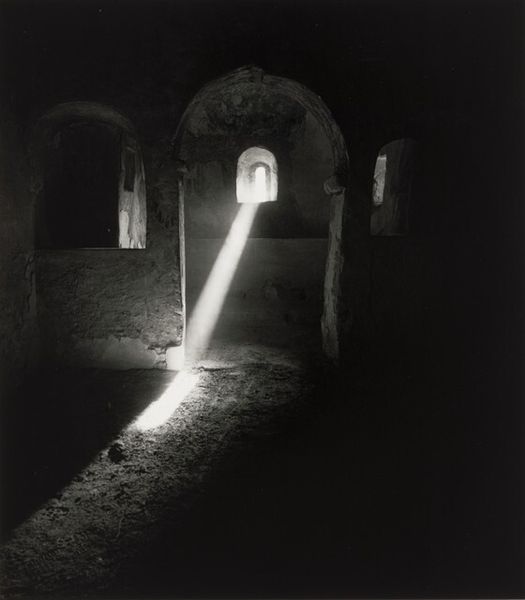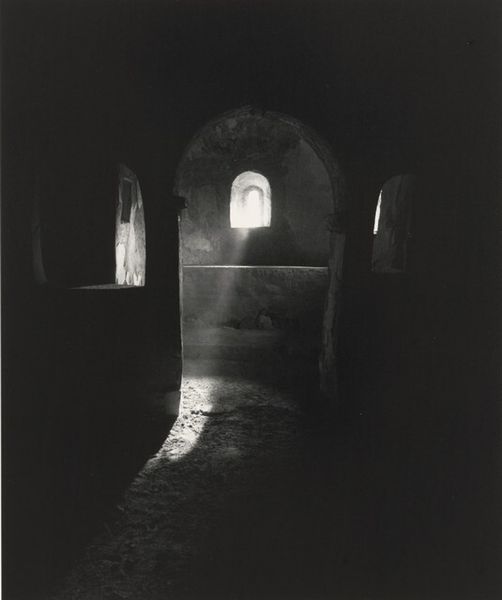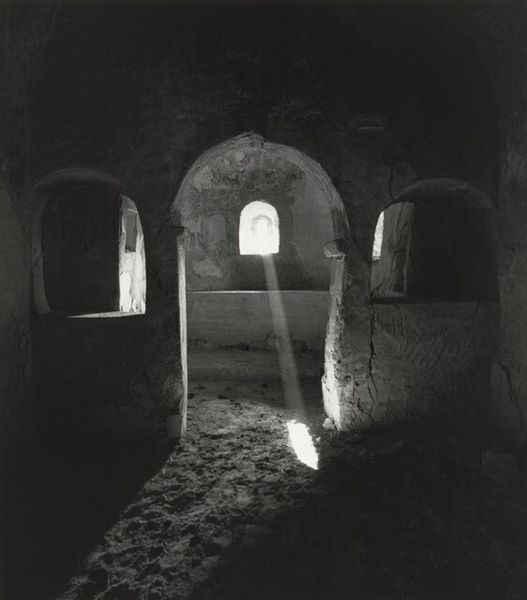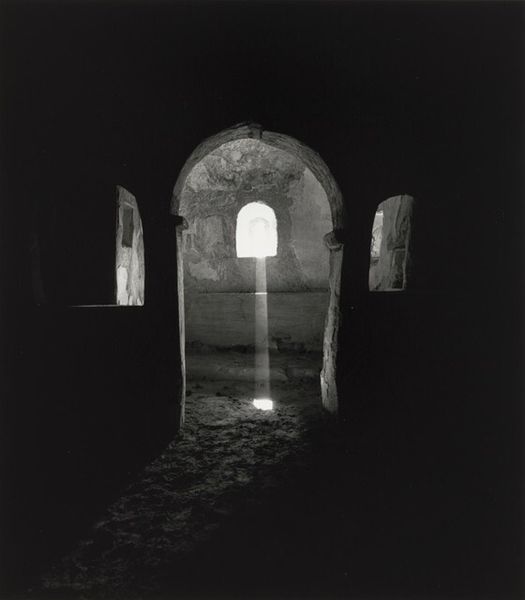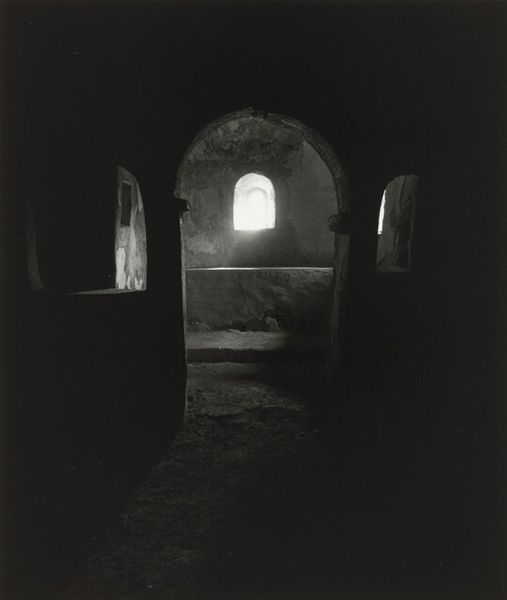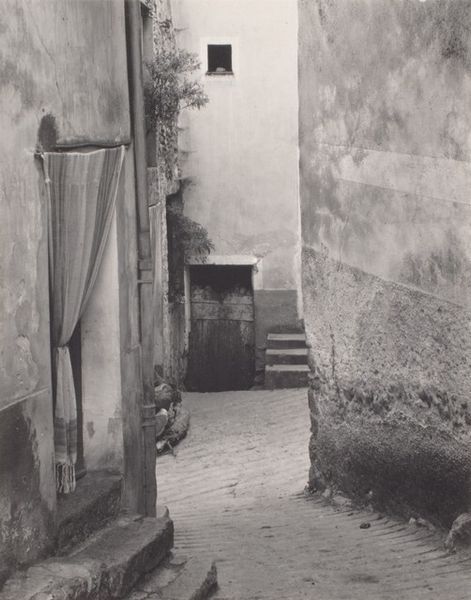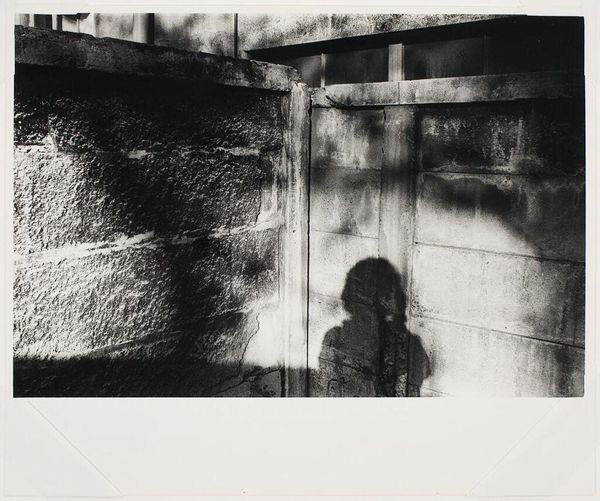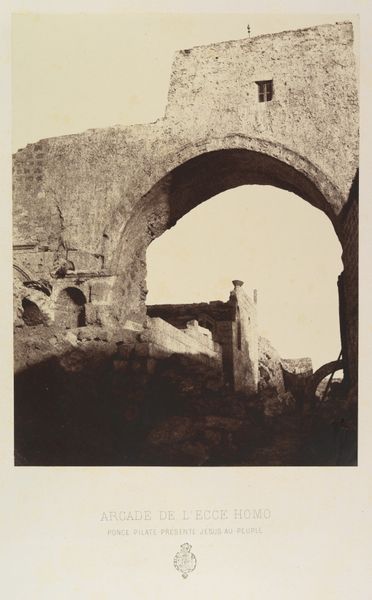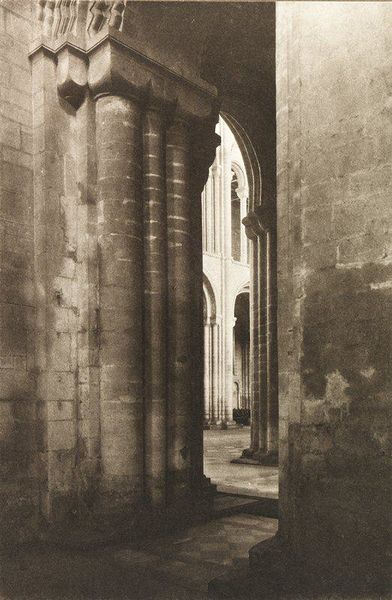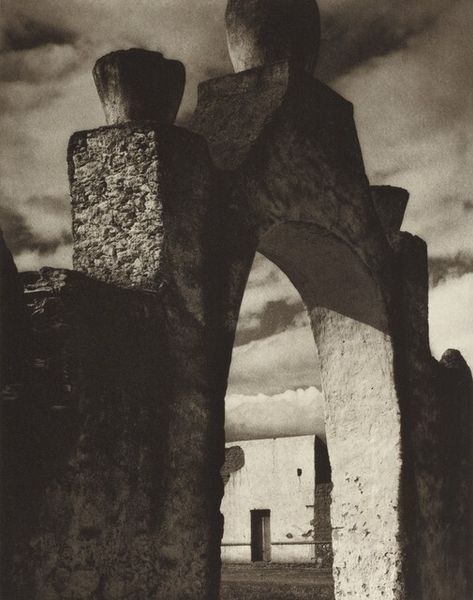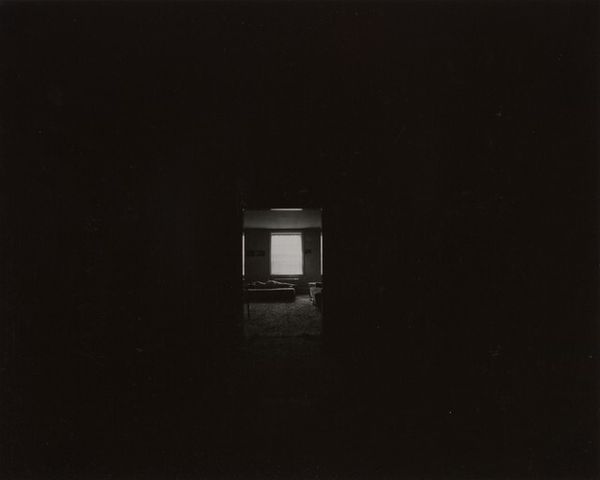
Esteban de Viguera, August 18, 1992, 9:05 - 11:05 a.m. 1992
0:00
0:00
photography, gelatin-silver-print
#
conceptual-art
#
black and white photography
#
sculpture
#
landscape
#
black and white format
#
dark monochromatic
#
photography
#
geometric
#
gelatin-silver-print
#
monochrome photography
#
monochrome
#
monochrome
Dimensions: image: 27.75 × 24.5 cm (10 15/16 × 9 5/8 in.) sheet: 40.01 × 30.48 cm (15 3/4 × 12 in.)
Copyright: National Gallery of Art: CC0 1.0
Ursula Schulz-Dornburg took this photograph, *Esteban de Viguera, August 18, 1992, 9:05 - 11:05 a.m.*, with a camera, of course. But more than that, she used the sun as a brush, and time itself as the canvas. I love the way the light falls – almost like a physical object, a bright, white wedge cutting through the dark. You can almost feel the cool dampness of the stone, smell the earth. It's a study in contrasts, stark and subtle at once. The light feels heavy, solid, sculptural. That beam transforms the space, doesn’t it? And the architecture becomes a vessel for something else, something transcendent. It reminds me a little of James Turrell’s light installations, but with an archaeological twist, a sense of history and decay. It's not just about what we see, but about the layers of time embedded in the walls, in the very air. And what, if anything, is meant to be illuminated by the sunbeam? Is there any answer, or just more questions?
Comments
No comments
Be the first to comment and join the conversation on the ultimate creative platform.
